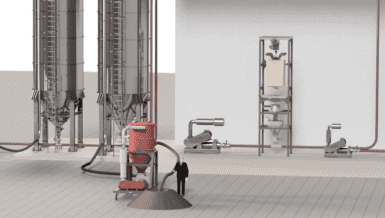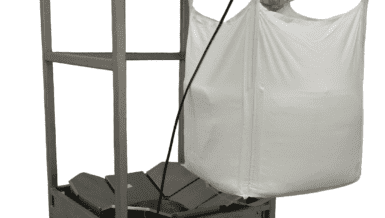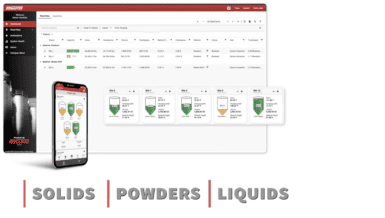Level measurement relies on multiple measures
A food production company monitors a silo of flour with level sensors to ensure timely refills. Then…they switch brands of flour. The new flour holds higher bulk density, which throws off measurements, which delays a refill, which stops production.
A feed operation uses a level sensor to measure a mix in a storage tank. Density fluctuates with temperature. Operators didn’t anticipate or average density correctly. Result: Sensor underestimates supply and production stops.
Ouch.
“There’s a lot of promises about bulk level sensors out there, but getting the right system, configured correctly, takes some know-how,” said Mike Mossage, a BinMaster vice president for eastern U.S. “We’ve built our software to account for things like bulk density of material, and we always encourage operators to give us a call when material changes or level readings seem off.”
Level sensors on bins, tanks, and silos don’t directly account for bulk density. Instead, they assume a constant or known bulk density. Sensors typically measure headspace (distance between material and the top of the vessel), along with vessel geometry, pressure, weight, and distance to create a level reading. Then, volume and weight can be derived. Mossage said strapping tables also help measurements and their accuracy.
BinMaster engineers continue to push technology. Level systems can now include multiple sensors, 3D, continuous level monitoring, and high-tech software solutions–BinCloud–to improve accuracy.

“The density of a bulk material can be different inside one silo. In some cases, material compacts at the bottom, and not so much at the top. We’ll look at that. We’ll ask about how often material loads and unloads and we’ll come up with workable averages,” said Nathan Grube, BinMaster Vice President. Central U.S.
What can change bulk density within my vessel?
| PARTICLE SETTING | Powders and granule particles settle (fill pockets of space) over time due to gravity. This may lead to denser packing at the bottom of a vessel (higher bulk density compared to the top). |
| COMPACTION | Bulk material weight can cause compression, particularly in powders. More material, more pressure on the lower layers, causing compaction and higher bulk density in the lower portions of the vessel. |
| AIR | Powders may contain entrapped air or voids within particles. During filling or discharge, voids can compress or release, changing bulk density. Higher air content brings lower bulk density. Lower air content lead to higher bulk density. |
| FLOW | Powders can flow differently. They may clump leading to uneven distribution and density. |
Bulk Density – Just for fun
| CORN | The density of corn varies by region because of genetic variations, growing conditions, and agricultural practices. In fact, agricultural scientists consider density while developing varieties. |
| PACKING PEANUTS | The bulk density of packing peanuts is low to provide cushioning and protection during shipping. Due to low density, they take up more space than the material they are meant to protect. |
| PUMICE | Stone floats. Pumice has a low bulk density–riddled with air cavities–which enables it to float on water. |
Bulk Density Chart: https://www.binmaster.com/bulk-density
BinMaster Bulk Material Experts: https://www.binmaster.com/sales-team
Article Reference
Schulze, D. (2021). Powders and bulk solids. Springer International Publishing.
Kansas State University. Powder Flowability Testing and Material Properties Test Lab. (n.d.). https://bulk-solids.k-state.edu/powder-flow-test/index.html










































